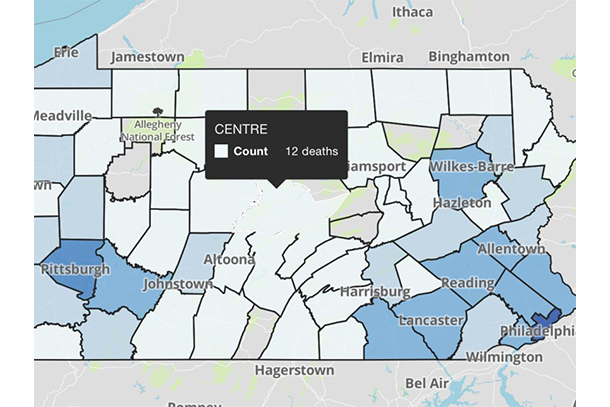
Overdoses have killed more than 900,000 people in the United States since 1999, according to the United States Centers for Disease Control. Getty Images: MechanismDigital
Ensuring fair distribution of the $1 billion+ opioid settlement in Pennsylvania
November 28, 2022
By Aaron Wagner
Editor’s note: The original version of this article appeared on Penn State News. Qiushi Chen, assistant professor of industrial and manufacturing engineering, and Rob Newton, doctoral student in industrial and manufacturing engineering, served as co-authors on the paper.
UNIVERSITY PARK, Pa. — To ensure fair and impartial distribution of the $1.07 billion that was awarded to Pennsylvania as part of 2021’s massive settlement with opioid manufacturers and distributors, a team of interdisciplinary researchers from Penn State worked with counties across the commonwealth to develop the formula by which funds are being distributed.
In The Milbank Quarterly, the researchers described the process they followed to select data for decision-making, develop a formula that addressed the needs of all counties and promote buy-in among counties. The researchers also described factors that other groups should consider when developing similar formulas and discussed lessons learned.
Overdoses have killed more than 900,000 people in the United States since 1999, according to the United States Centers for Disease Control. Eighty-two percent of those deaths were related to synthetic opioids, which research shows have been over-prescribed for pain management. Multiple legal settlements showed that dishonest and illegal practices by companies that make and distribute synthetic opioids fueled the opioid epidemic.
In 2021, four pharmaceutical companies and three distributors reached a $21 billion settlement with 46 states’ Attorneys General. These funds were designated to address the crisis to which the companies’ actions contributed. Pennsylvania, which was hit particularly hard by the opioid epidemic, was awarded $1.07 billion to be paid over 18 years. The Penn State team collaborated with all 67 counties across Pennsylvania to decide how to fairly distribute the money.
Seventy percent of the funds in the settlement are being distributed directly to Pennsylvania’s counties. The settlement stipulates that funds must be used for the abatement of the opioid problem, but each locality has discretion over how funds are spent within their jurisdiction. Legally, the funds may go to a wide range of programs including prevention efforts, treatment and recovery programs and more.
Danielle Rhubart, assistant professor of biobehavioral health and demography, lead this publication. Co-authors include Dennis Scanlon, distinguished professor of health policy and administration and director of the Center for Health Care and Policy Research; Qiushi Chen, assistant professor of industrial and manufacturing engineering; Rob Newton, doctoral student in industrial and manufacturing engineering; Glenn Sterner, assistant professor of criminal justice at Penn State Abington; and Bethany Shaw, assistant director of data accelerator compliance at Penn State’s Evidence-to-Impact Collaborative.

Screenshot of interactive map showing Pennsylvania's overdose death statistics in 2021. The interactive map is available here. Credit: Open Data PA



